Hello Guys, Interhalogen compounds are one the most important topic for Jee Mains, advance, NEET, BITSAT, and AIIMS. Generally, Passage-based questions are asked in the examination. Let’s Start the topic:-
The halogens react with each other to form interhalogen compounds. The general formula of most interhalogen compounds is XYn, where n = 1, 3, 5 or 7, and X is the less electronegative of the two halogens. The compounds which are formed by the union of two different halogens are called inter halogen compounds. There are never more than two types of halogen atoms in an interhalogen molecule. There are of four general types:
AX- type : ClF, BrF, BrCl, ICl, IBr,
AX3-type: ClF3, BrF3, (ICl3)2,
AX5-type: ClF5, BrF5, IF5,
AX7-type: IF7.
Interhalogen are all prone to hydrolysis and ionize to give rise to polyatomic ions. The inter halogens are generally more reactive than halogens except F. This is because A-X bonds in interhalogens are weaker than the X-X bonds in dihalogen molecules. Reaction of inter halogens are similar to halogens. Hydrolysis of interhalogen compounds give halogen acid and oxy-acid.
NOMENCLATURE
To name an Interhalogen compound, the less electronegative element is placed on to the left in formulae and naming is done straight forward.
Properties
Some properties of interhalogen compounds are listed below. They are all prepared by direct combination of the elements although since in some cases more than one product is possible the conditions may vary by altering the temperature and relative proportions. For example under the same conditions difluorine reacts with dichlorine to give ClF with dibromine to give BrF3 but with diiodine to give IF5.
Structures
The structures found for the various interhalogens conform to what would be expected based on the VSEPR model. For XY3 the shape can be described as T-shaped with 2 lone pairs sitting in equatorial positions of a trigonal bipyramid. For XY5 the shape is a square pyramid with the unpaired electrons sitting in an axial position of an octahedral and XY7 is a pentagonal bipyramid.
ClF3 IS HYPERGOLIC
Hypergolic means explode on contact with no need for any activator. One observer made the following comment about ClF3 :
It is, of course, extremely toxic, but that’s the least of the problem. It is hypergolic* with every known fuel, and so rapidly hypergolic that no ignition delay has ever been measured. It is also hypergolic with such things as cloth, wood, and test engineers, not to mention asbestos, sand, and water with which it reacts explosively. It can be kept in some of the ordinary structural metals-steel, copper, aluminium, etc.-because of the formation of a thin film of insoluble metal fluoride which protects the bulk of the metal, just as the invisible coat of oxide on aluminium keeps it from burning up in the atmosphere. If, however, this coat is melted or scrubbed off, and has no chance to reform, the operator is confronted with the problem of coping with a metal-fluorine fire. For dealing with this situation, I have always recommended a good pair of running shoes.”
It is believed that prior to and during World War II, ClF3 code named N-stoff (“substance N”) was being stockpiled in Germany for use as a potential incendiary weapon and poison gas. The plant was captured by the Russians in 1944, but there is no evidence that the gas was actually ever used during the war.
Summary
All Interhalogens are volatile at room temperature. All are polar due to difference in their electronegativity. These are usually covalent liquids or gases due to small electronegativity difference among them. Some compounds partially ionize in solution.
Interhalogen compounds are more reactive than normal halogens except fluorine.
Please Like and Subscribe for more such videos.
Thanks
Team
IITian explains
source











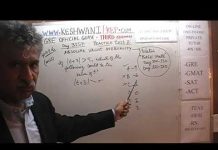

![CY_GATE_2019_PHYSICAL_SPECTROSCOPY_[ELECTRONIC_BASIC]_All IN ONE_[Short_Trick]_2018-19_PART_1ST - Videos](https://trends.edugorilla.com/wp-content/uploads/sites/8/2018/08/cy_gate_2019_physical_spectroscopy_electronic_basic_all-in-one_short_trick_2018-19_part_1st-218x150.jpg)






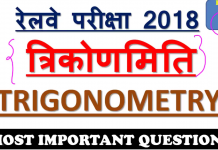

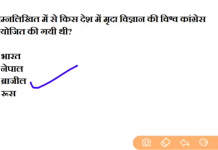






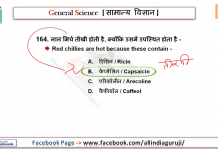


![24 August 2018 – The Indian Express Newspaper Analysis हिंदी में – [UPSC/SSC/IBPS] Current affairs - Videos](https://trends.edugorilla.com/wp-content/uploads/sites/8/2018/08/a520-218x150.png)
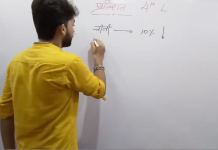



Thank u.
….Plz upload more regarding organic chemistry
Awesome sir….. please continue this series
very helpful
Thank you sir.I am your biggest fan sir. Please upload more videos on Organic and Inorganic.
Sir please upload twice In a week…. INORGANIC
Thanks Sir , Nw my concept is Crystal clear.
please continue this inorganic series sir, really helpful
Tremendously awesome video Junior ?
Keep it up.
Thanks sir….. awesome. …sir …aise hi IIT jee Ke liye…most imp concepts dete raho…thanks a lot you are working… great…really..
Sir p block mein…bahut reactions hai..please …help us. …..on making a video …to remember reactions…that are important..for.IIT main and advance…thanks.sir…
Sir you are more then awsome
Fabulously explaned
It really helped!!! Thank u ?
Crystal clear concept sir… ??..thank uu so much sir.. Its amazing..!!!!! ??
sir plz coordination chemistry pe video daliye
Nice sir…u r explanation is best….u r really good plz sir organic k v dala kare
Sir Bahut acha explanation hai sir aapki chemistry bahut strong hai
I big fan of u
Wow sir?☺?☺??